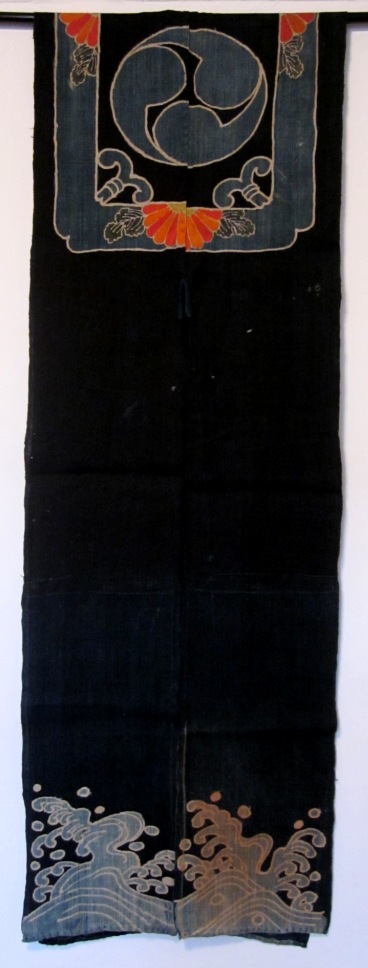Uma no haragake (horse trappings)
Asa
Tsutsugaki (rice paste resist), dyes, pigments
This would have been worn by a horse during a festival procession. More than 12 feet long, it is shown in two photographs. The two large crests of three commas would go around the horse’s girth. The four long flaps are ties, and would be knotted at the horse’s spine. Northern Japan could not grow cotton as well as southern Japan, so asa was a staple for woven goods. The two shades of blue indicate this piece had to be dyed twice. Once the light blue was achieved, that was covered in paste resist so the uncovered part would continue to receive dye. The colors of the chrysanthemum were achieved by brushing pigment onto the cloth.

